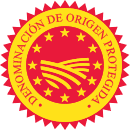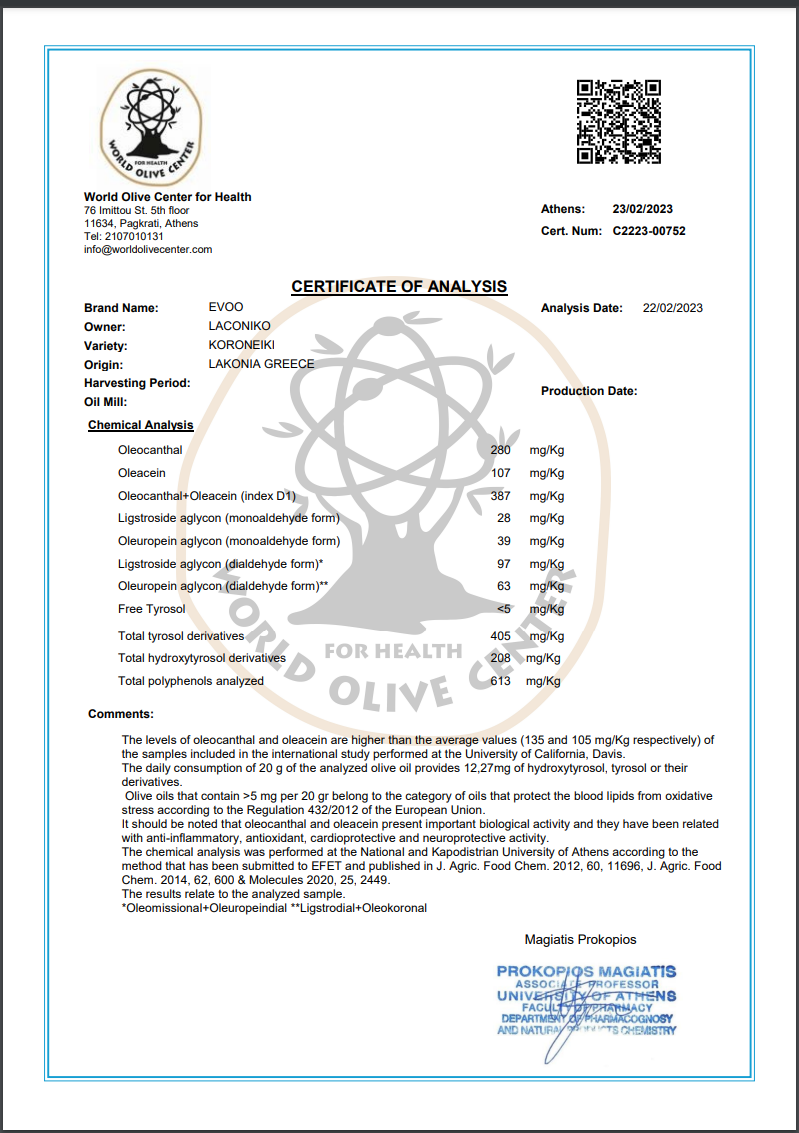
Assessing Olive Oil Quality: The Ultimate Guide
7 February 2024
How do you know which olive oils are quality and which are cheap, potentially even fake? Read our ultimate guide on what to look for if you only want the best.
There are often headlines in the news and media talking about cheap, low quality or even fake olive oils flooding the market and prying on unsavvy consumers. While this is undoubtedly an issue (in some countries more than others), there are many steps you can take to learn enough to protect yourself from these products.
High Polyphenol Olive Oil
As you may have already guessed, high polyphenol content is potentially the most important indicator of oil quality among the health conscious. Polyphenols are a naturally occurring compound found in certain foods, and if the olives are grown in the correct way, they can be found in high quantities in extra virgin olive oil. New research is always coming out around a number of beneficial health effects that high polyphenol olive oil has over regular olive oil. Mary M. Flynn's research for example, on high blood pressure reduction or this study that shows strong signs of high polyphenol oils conferring some cardiovascular disease risk reduction.
Freshness/Shelf life
Freshness is important part of determining an oil's quality, and there are many factors that can influence it - the first and most obvious being harvest date. A harvest date being present on the label is a great indicator of quality; some low quality oils are made from a blend of olives all harvested on different dates, and so the label will not contain a harvest date at all.
Taste and smell will degrade as an oil oxidises as it ages, and polyphenols will naturally reduce too, so it's important to consume it fresh if possible.
To select an oil with a high shelf life, choose one with a fresh harvest date, a low peroxide value (more on this later), make sure it's filtered and has high polyphenol content (they're not just healthy - they help with shelf life too).
Cultivar
The cultivar (cultivated variety) is one of the most important things in determining a high quality olive oil. What this tells us is which variety of olives were used to make the oil. For example an oil with a cultivar of Koroneiki, straightforwardly tells us that the oil was made with Koroneiki olives. A monocultivar means the oil was made with a singular variety of olives and no others, so you might see this labeled as monocultivar Koroneiki.
We find as a general rule of thumb the highest quality oils tend to be either monocultivar or a blend of two varieties. Any more than that and it’s possible the producer is trying to blend a number of oils to make up for or hide a certain defect in one of the varieties.
Extra virgin olive oil only
It’s important to buy oils that read extra virgin olive oil on the label, this signifies the oil has been cold-pressed by a machine without heat or chemicals, and not mixed with any olive material from previous pressings. Labels that read “Olive oil”, “Pure Olive Oil”, “Refined Olive Oil” are low quality and should all be avoided. Extra virgin olive oil is unrefined, and that is a good thing, it means the oil was made without heat or chemicals. Cheaper oils sometimes take the form of many oils blended together with varying degrees of quality, rancidity and refinement.
As a small point leading on from this, refinement is not to be confused with the process of filtered vs unfiltered oils - that is an entirely different process. Unfiltered oils tend to be higher in healthy components like polyphenols, but come at the expense of having a shortened shelf life. The small olive matter particulates that remain in an unfiltered oil oxidise more readily with sunlight and effectively ferment in the oil - leading to rancidity. But, to be clear, high quality extra virgin olive oil comes in both filtered and unfiltered variants.
Packaging
For olive oils to be stored properly, they need to be protected from the sun. Rays from the sun in the UV wavelength induce oxidation in the oil, even in small doses. This reduces the amount of healthy phenolic content and increases the rancidity of the oil. In short, the oil is going to spoil a lot quicker if exposed to sunlight. So when you see an oil sitting on the supermarket shelf in transparent plastic, leave it there.
Better quality oils come packaged in darkened glass, so they are protected somewhat from sunlight (should still be stored in the cupboard), and there is no chance of microplastic particles leaching into the oil, affecting taste or the health of consumers.
Acidity
There are a lot of terms assigned to olive oil that can seem to overlap when you first read them, "free fatty acidity", "oleic acid percentage", "peroxide value". All have slightly different meanings - but we can quickly form a basic understanding to help us figure out which olive oils are high quality and which may not be.
Let's start with free fatty acidity potentially the most important factor here. Free fatty acidity is a generally accepted measure of oil quality. Olives that have been picked, handled delicately, and then taken to the mill to separate the oil out, all in a timely manner should have a low free fatty acidity (FFA). Low free fatty acidity is better. To be classed as 'extra virgin' the oil must have a FFA of below 0.8%, but more premium oils try to target <0.2%.
Oleic acid, measured as a percentage from between 55-83% (as per the International Olive Council), is a fatty acid known for its healthy nutritional benefits and its ability to prolong the shelf life of an oil. Therefore a high oleic acid percentage is better. Although oleic acid is a free fatty acid do not confuse free fatty acidity percentage with oleic acid percentage, they are related but it's easier if you view them as completely separate metrics.
Peroxide value is measured in meq/kg, and this is an important metric to consider if you are concerned with an oil's shelf life. The peroxide value is just a measure of the active oxygen contained within the oil. A high peroxide value in a newer oil can indicate that the shelf life of the oil will be a lot shorter. So as a general rule, the lower the peroxide value the better.
PDO Status
It’s worth looking out for oils that have been awarded a PDO (Protected Denomination of Origin), or you might sometimes see the Italian version DOP (Denominazione di Origine Protetta). This status, that you will recognise from distinctive logos found on an oil’s label, signifies that the olives were grown and bottled in a certain area. In theory, oil with a PDO/DOP should embody some of the characteristics expected from that area.
Does an oil carrying a PDO/DOP guarantee that it is of great quality however? No. The oil may have been damaged by sunlight as it was imported into the country, it may have been sat on the shelf for months… or years. Take PDO/DOP certifications with a pinch of salt, they certainly say that the olive oil producer is of reasonable size and authenticity, but not much more than that.

Logo for the PDO status for extra virgin olive oils
Research the producer
Make a habit of putting the brand name of the oil into a search engine, try to find the producer and view their website. Look to see if you can find information on where their olive groves are located, are there pictures and drone shots of the actual olive trees? An important thing to look for is contact information that leads you to a real person. A fraudulent company may put up a convincing website but real producers tend to have images of employees and contact information that let you get in touch with them.
Some producers go one step further, and publish the results of analyses they’ve done on their oils, like polyphenol content, peroxide or acidity levels. Even if you’re not sure what metrics like this might mean, the fact that they are published is a good sign. Just be aware that these numbers can quickly become out of date, and may not relate to the most recent harvest. This point is mainly about building as many factors in your mind as possible to form a complete picture of the producer. If they’re light on detail then maybe they are best avoided until you can find more information.
Check independent certifications
Independant certifications are a great signifier of quality. Producers that go the extra mile and not only pay to send a sample of their oil to a lab for testing, but then publish the results for consumers to read are automatically on the higher end of the quality scale.
Reports by Dr Magiatis Prokopios are the most well recognised chemical analysis certifications. These reports also analyse the level of total polyphenols which, as already discussed, are the component in extra virgin olive oil responsible for its considerable health benefits.

An example certificate of analysis signed by Dr Magiatis Prokopios from the World Olive Center for Health
Browse our high polyphenol extra virgin olive oils
Browse EVOOs